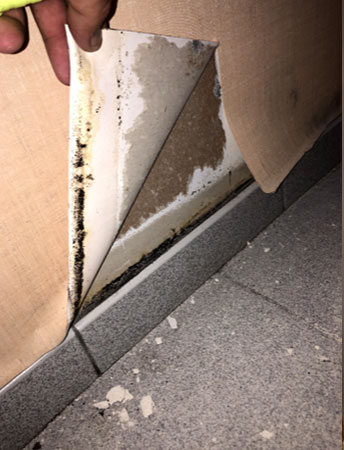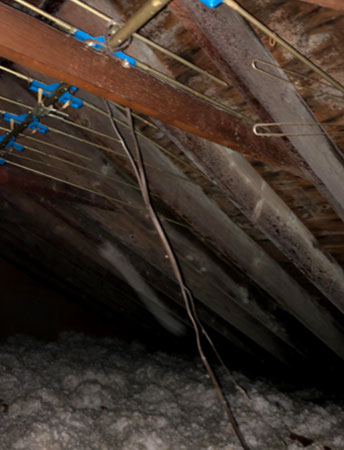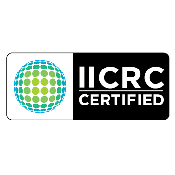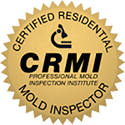Why Test For Mold?
Mold Testing should be done if you want to determine if mold is growing in your home.
Mold Testing should be done after any flooding or water damage event.
Mold Testing should be done whenever you find a leak that has been present for more than 24 hours.
Mold Testing should be done whenever you smell a musty odor.
Mold Testing should be done if residents of your home experience a long-term medical condition without a known cause.
Mold Testing should be done if unusual stains appear on furniture or building material.
Mold Testing should be done if you suspect mold but do not see any visible mold growth.
Mold testing should be done if you are purchasing a foreclosed or "as is" home. (even if not required by bank).
Mold testing should be done if you have an unexplained cough while at home.
Water intrusion and damp buildings can be a primary source of mold activity.
You do not have to live in a humid climate for mold growth, though the air outside may not feel warm and humid, the atmosphere between walls, in basements, under sinks, around pipes, and in crawl spaces maybe a perfect home for mold growth.
Can I Use Bleach To Get Rid Of Mold?
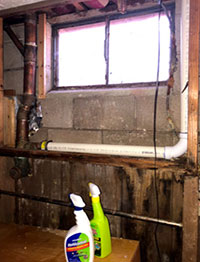
Mold hyphae (root structures) actually grow into wood and drywall like roots. The hyphae are not killed by bleach because bleach's ion structure prevents chlorine from penetrating into porous materials such as drywall and wood. It stays on the outside surface, whereas mold has protected enzyme roots growing inside the porous construction materials. when you spray a porous surface with bleach, the water part of the solution soaks into the wood while the bleach chemical sits on top of the surface, gasses off, and thus only partially kills the surface layer of mold while the water penetration of the building materials fosters further mold growth.
Why Is It Useful To Identify Surface Mold Types?
Mold produces mold spores. When surface mold is disturbed, thousands (perhaps even millions) of tiny spores become airborne, which may ultimately end up in the lungs of anyone nearby. It is beneficial to know whether or not the mold growing on a surface is toxic before attempting to clean it so that you can take adequate measures to protect yourself and others from potentially harmful effects. Both surface and air sampling techniques are widely recognized as the best processes for achieving accurate evaluations of both indoor air quality (IAQ) and the specificity of surface mold types. However, the use of one without the other may result in an inaccurate characterization of the area sampled. For example, Stachybotrys (a known toxic mold) has shown up in surface samples but not air samples in the same property. Often times there can be certain types of mold on a surface that are not airborne...Yet, for that reason it is prudent to sample both air and surface molds (in some cases).
Reasons To Test For Mold
There are many valid and valuable reasons to perform mold testing. Here are just a few reasons:
-
To establish a baseline for future testing.
This allows a mold professional to track and evaluate the progress of mold abatement activities. If the current levels are unknown, it is difficult to establish that progress has been made.
-
To establish the presence of mold and the justification for remediation.
Many remediators and insurance companies will not authorize or undertake mold remediation if the presence of mold growth is not scientifically demonstrated.
-
To set the parameters for the remediation.
Many remediation companies will not initiate an abatement project without the input of a testing company to define the boundaries of the affected area needing remediation.
-
To identify the types of mold present, i.e. "natural" or "toxic".
In many cases, residents are interested in the types of mold present and the possible relation to medical symptoms they may be experiencing. Certain mold species may cause serious illness in the elderly, or in infants; people who have weak immune systems due to chemotherapy or AIDS. Testing can assure the indoor environment is free of mold species that may cause infection in susceptible persons.
-
To find out the levels present.
Although mold is mold, and its presence calls for remediation, it is useful to know if the ambient airborne levels are in a range of thousands, or hundreds of thousands. For example, this may affect decisions regarding the timeliness of remediation, and the continued occupancy of the premises.
-
To find "hidden mold".
Mold growth may often not be visible in a house, but known water intrusion or a moldy odor provides cause for concern. Testing will identify if there is a mold problem, even when there is no visible mold growth.
-
To "clear" a remediation, that is, to show that all mold is gone after remediation.
Often, mold remediation will miss a mold-contaminated area. Testing of the air in the contained work area will assure that the levels inside the work area are reduced to ambient levels. This also provides documentation for future real estate transfers that the mold was properly and effectively removed.
-
To "establish" the lack of mold, as in a home purchase.
Sometimes a homebuyer will have concerns about mold when purchasing a new home. This may be as a result of a bad experience with mold in their previous residence. Mold testing can provide the peace of mind that there are no problems with elevated airborne mold in the new house.
-
To show that a flood has not yet created mold growth.
Floods in homes and offices can occur due to breaks in plumbing lines, or failure of plumbing fixtures. After the cleanup and drying, it is useful to test for mold to assure occupants that mold has not grown as a result of the flooding.
-
To support a legal case.
A lawyer or plaintiff usually needs to have objective evidence of the presence or absence of mold and mold exposure to support a legal action. Testing can show scientifically that mold was, or was not, present.
Real Estate deals
Do Not have to be broken. If the home you are thinking about purchasing has mold do not panic. you can remove unusual mold levels from the home and bring it back to it's original condition.

